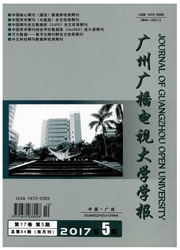

 中文摘要:
中文摘要:
目的:探讨神经元特异性烯醇化酶(NSE)在中重度颅脑损伤病情判断及预后预测中的应用。方法:选取我院2009年5月至2010年5月中重度颅脑外伤住院患者96例,按照入院GCS评分分为中度组59例及重度组37例,设同期健康成人40例为对照组。抽取外伤后6 h、1 d、3 d、5 d、7 d的肘部静脉血,进行NSE测定。对96例患者进行为期3个月的随访,根据GOS评分分为预后良好组33例和预后不良组63例。采用方差分析比较各组NSE浓度差异。结果:中重度颅脑外伤患者NSE较对照组升高(P〈0.01),重度组较中度组更高(P〈0.01)。预后不良组NSE水平较预后良好组高(P〈0.01)。结论:血浆NSE水平可以反映脑损伤的程度。进行NSE含量的检测对脑损伤的病情评估和预后预测有一定的作用。
 英文摘要:
英文摘要:
Objective: To explore the application of serum neuron specific enolase(NSE) on severity assessment and prognostic speculation of moderate and severe craniocerebral trauma.Methods: Ninety-six patients with moderate and severe TBI in our hospital from 2009.5 to 2010.5 were selected.And those who have tumor,severe cardiopulmonary insufficiency and stroke,craniocerebral trauma,myocardial infarction recently,and injured longer than 6 hours were removed.Serum samples for NSE analysis were obtained from an antecubital vein 6 hours after TBI,and 1 day,3 days,5 days and 7 days later.Outcomes of all patients were evaluated with GOS 3 months after injury.Results: Ninety-six patients were divided into 2 groups according to GCS,moderate group(GCS 9~12) was 59 cases and severe group(GCS 3~8) 37 cases.And 40 health persons the corresponding time as control group.Serum NSE levels of moderate group and severe group were higher than that of control group,(P 0.01).Serum NSE levels of severe group were more higher than that of moderate group,P 0.01.All patients went on 3-month follow up.Good prognosis(GOS 4~5) was found in 33 cases,poor prognosis(GOS 1~3) 63 cases.Serum NSE levels were significantly higher in the patients with poor prognosis than that in the patients with good prognosis(P 0.01).Conclusion:Serum NSE content reflects the severity of crainiocerebral trauma,it is a sensitive quantitative index.Dynamic measurements of serum NSE contents after craniocerebral injury are of impor-tance for clinical observation and outcome prediction.
 同期刊论文项目
同期刊论文项目
 同项目期刊论文
同项目期刊论文
 期刊信息
期刊信息
